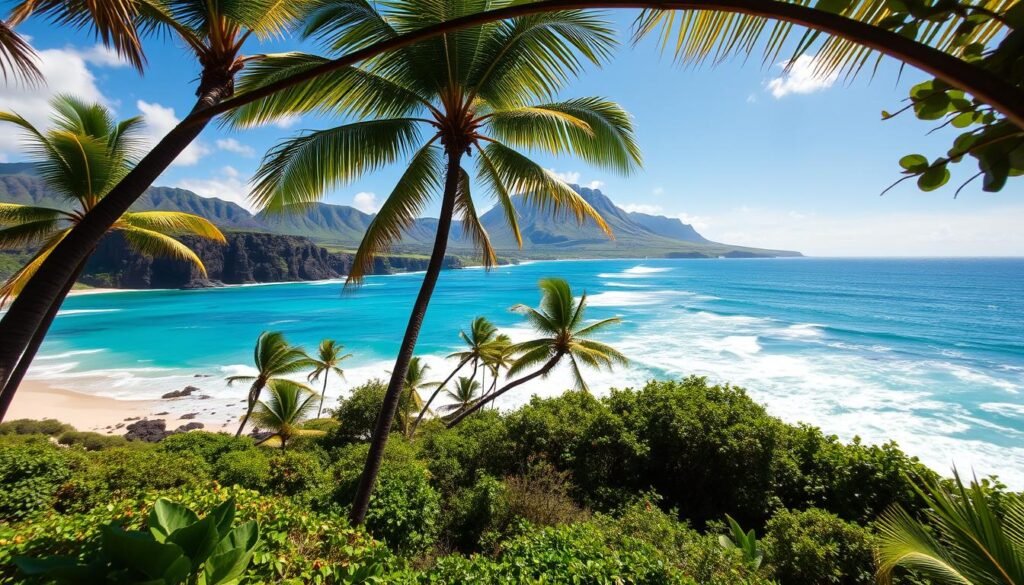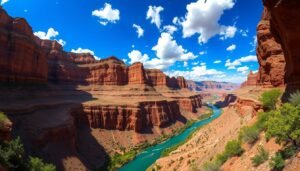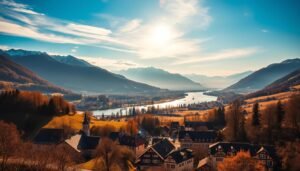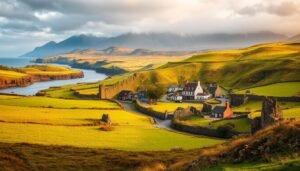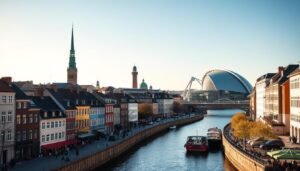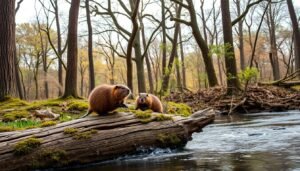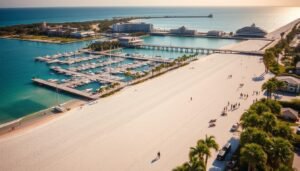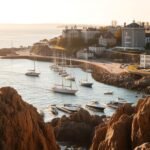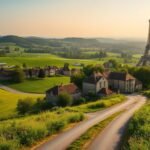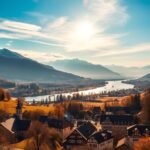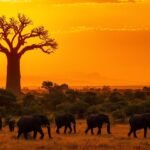Surprising fact: over 300 sunny days make this stretch on the west side one of the driest spots on the Big Island, so mornings are calm and the ocean often feels like a private playground.
I call Kailua-Kona my base because warm weather, easy beach access, and quick drives let me pack a lot into one day. I sketch my days with early ocean starts, a midday break for coffee and culture, then golden-hour drives along lava-lined shorelines.
I’ll find snorkel hot spots, evening manta swims, and farm tours within short radius. Renting a car is essential; distances on the island feel long and public transit is limited.
Expect mix of adventure and downtime: rocky lava coasts with pockets of sand and mellow beaches invite both action and rest. I plan clusters of activities near each place so I spend more time enjoying and less time driving.
Key Takeaways
- Base yourself on the west side for sunny mornings and quick ocean access.
- Rent a car—distances across the big island add up fast.
- Plan early starts, midday breaks, and golden-hour outings.
- Mix snorkel, culture, and relaxed beach time for balance.
- Respect reefs, wildlife, and sacred sites while exploring.
Start here: how I plan my days on the sunny west side of the Big Island
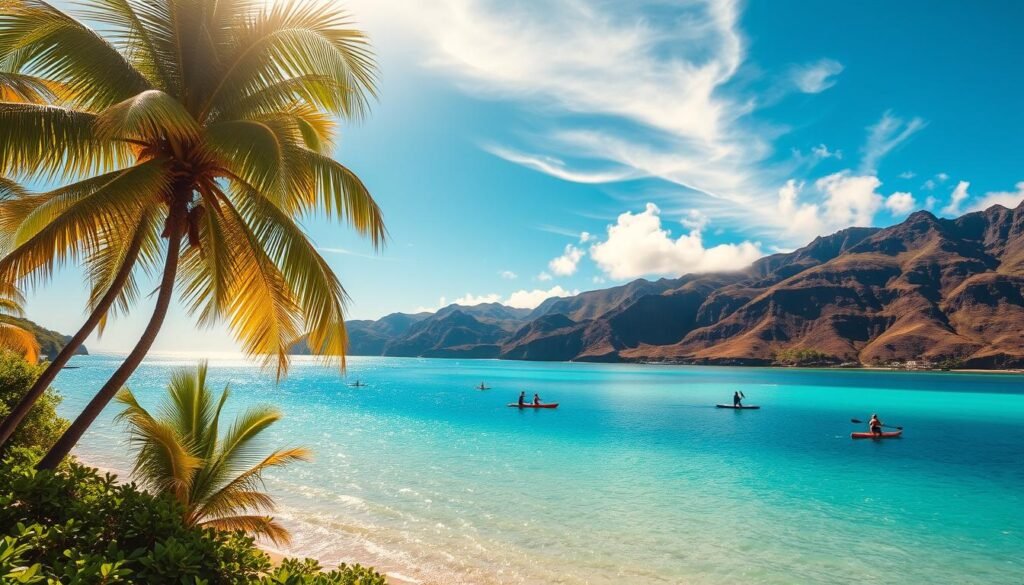
I start mornings with ocean time and save the afternoon for markets, museums, and coffee. Early water sessions work best because the seas are calmer and the light is lovely for photos.
I map a simple day: morning water adventures, afternoon cultural stops, and evenings for sunset and a relaxed dinner. I stack places on the same side of the island so I cut backtracking and save energy for fun.
I always build buffer minutes between tours and meals. That spare time keeps boat departures and timed entries from feeling rushed.
Book big-ticket tours early—manta night swims, snorkel cruises, and helicopter flights fill fast. I also keep one flex day in case of jet lag or weather shifts.
- Lunch near the beach lets me slide into a swim.
- Arrive early for parking at popular bays.
- Reef-safe sunscreen, hats, and hydration are non-negotiable.
| Time of Day | Main Focus | Why it works |
|---|---|---|
| Morning | Snorkel / paddle | Calmer seas, better light |
| Afternoon | Markets / history | Walkable towns, shade breaks |
| Evening | Sunset / dinner | Bookings easier earlier in the day |
Iconic on the Kona side: manta ray night snorkel or dive
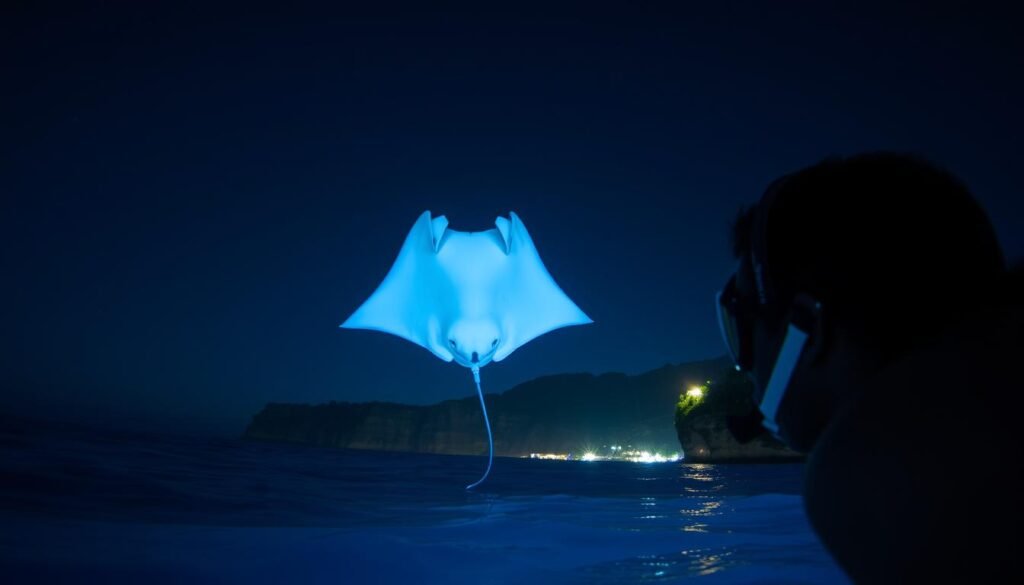
A guided night swim here can feel like stepping into another world. Boats gather at Manta Ray Village off the Outrigger and at a second site by the Mauna Kea Beach Hotel. Lights draw plankton, and mantas barrel-roll inches below a ring of lamps.best-places-to-visit-in-mexico
What a typical tour looks like: a short dusk ride, a briefing, then a float with a lighted platform. You slip into calm water and watch graceful manta wings pass under the glow.
I pack a snug mask and snorkel, a rash guard, and warm layers for the ride back. Guides I trust run small groups, clear briefings, and wildlife-first rules.
- Choose snorkeling or scuba based on confidence and comfort.
- Watch weather and pick a backup night if swell rises.
- For seasickness: take meds early and focus on breathing once in the water.
This is one best places on the big island for a manta encounter, and a Kona resort trip feels complete without giving it a try.
Crystal-clear snorkeling spots you can’t skip

On calm mornings I aim for bays where visibility tops sixty feet and coral gardens wait below. These three snorkel sites are my go-to for clear water, lively fish, and easy planning.
Two Step (Hōnaunau Bay) by Puʻuhonua o Hōnaunau National Historical Park
Why I love it: easy lava “steps” for entry, dense live coral, and frequent fish sightings. Bring your own gear—there are no rentals on site.best-time-to-visit-hawaii
Watch the conditions: check depth, surge on the ledges, and boat traffic. I usually go early for calmer water and fewer boats.
Kealakekua Bay near the Captain Cook Monument
This bay rewards patience with crystal clarity and coral gardens around the Captain Cook Monument. Access options include a steep trail, permitted kayak, or a morning boat tour.
Tip: the hike is hot and steep; a boat trip gives the same visibility with less effort and more comfort.
Kahaluʻu Beach for beginner-friendly snorkeling
Kahaluʻu has an ancient breakwall that shelters a shallow lagoon. It feels like a living aquarium and is perfect for first-timers and families.
Wildlife notes: expect colorful reef fish and occasional honu at Kahaluʻu, deeper reef life at Two Step, and wide visibility with schools or dolphins at Kealakekua Bay.
- Gear: a well-sealing mask, trusted fins, and a snug rash guard are worth packing even if you join a tour.
- Etiquette: never stand on coral, keep fins up, and use reef-safe sunscreen.
- Logistics: arrive early or midweek for easier parking; pair a stop with a nearby cultural site or cafe to refuel.
things to do in kona hawaii
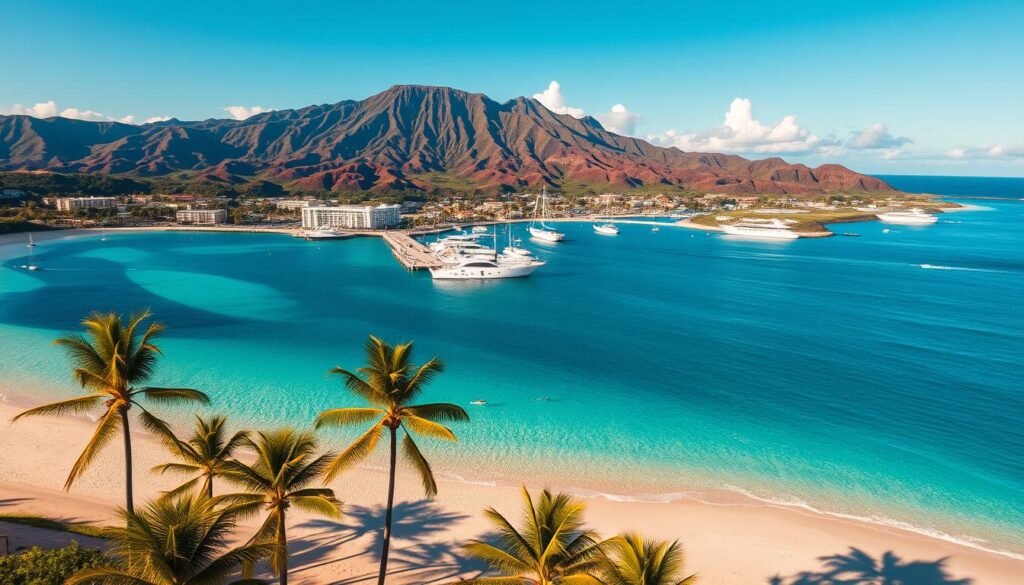
When I plan a short Kona itinerary, I pick a handful of high-impact stops that fit into easy loops.
Quick-hit planning: manta night snorkels, Two Step and Kealakekua for daytime snorkeling, a coffee farm tour, and a cultural stop at Puʻuhonua o Hōnaunau form a solid first day.
I also add a calm beach entry like Kahaluʻu or a guided boat day if you prefer not to swim from shore. Breakfast-and-lunch cruises hit crisp bays, while the Atlantis Submarine gives ocean views without getting wet.
For variety: slot a farm tasting (coffee, cacao, or sea salt) as an afternoon break. Those stops taste great and teach a bit about local life.best-time-to-visit-scotland
Don’t skip photogenic sands: plan one day for black or green sand and another for white-sand relax time near town. For big payoffs, reserve separate days for Mauna Kea, Pololū Valley, or Volcanoes National Park.
Booking tips: manta swims and popular boat cruises sell out first. If your schedule is tight, check midweek availability and keep one flex day.
| Pick | Why I like it | Best time |
|---|---|---|
| Manta night snorkel | Unforgettable wildlife encounter | Evening, reserve early |
| Two Step / Kealakekua | Top visibility and coral | Calm morning |
| Coffee & farm tours | Tasty breaks and shade | Midday, cooler indoors |
| Mauna Kea / Pololū day trip | Epic views without overload | Sunset for Mauna Kea, morning for Pololū |
Culture and history: National Historical Parks and sacred sites
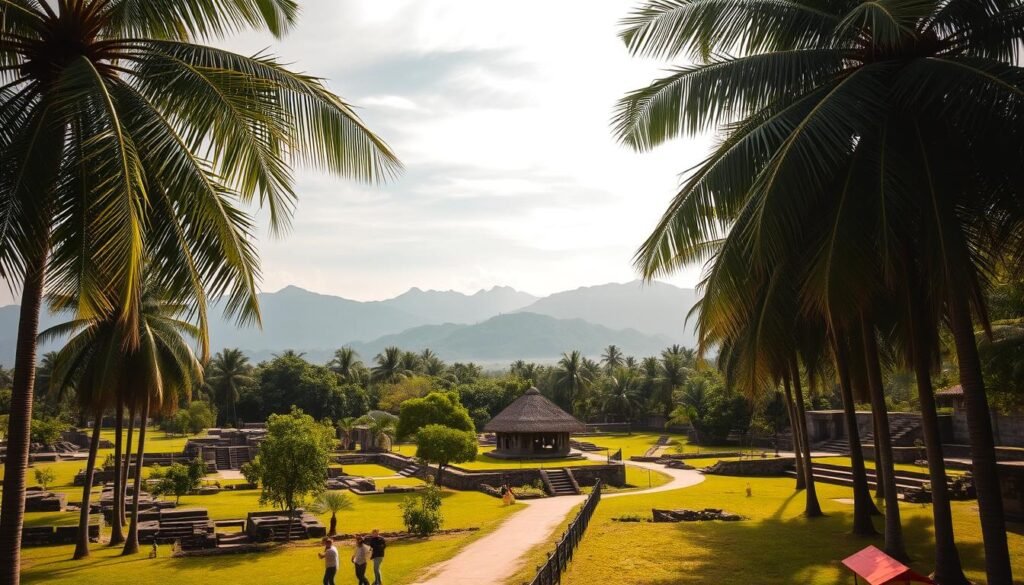
I make a point of visiting sacred sites early, when light and quiet help the stories settle in. Walking these protected places changed how I see the shorelines and old walls.
Puʻuhonua o Hōnaunau (City of Refuge)
Start here: this national historical park was once a sanctuary for those who broke kapu law. Heiau, royal grounds, and canoe-house replicas remain.
I map an easy loop that hits the main heiau and then pair the stop with snorkeling at nearby Two Step. Parking is simple; donations are welcome. Wear sturdy shoes for uneven lava rock.
Kaloko-Honokōhau’s fishponds and trails
North of town I walk past ancient fishponds, petroglyphs, and coastal trails rich with birds. The park protects coastal habitat and cultural sites near the airport.
“Respect the signs, keep to paths, and let the place teach you.”
Ranger-led programs and self-guided routes offer meaningful context. Mid-morning or late afternoon gives cooler light and easier photos.
Huliheʻe Palace in Kailua-Kona
Built in 1838, Huliheʻe Palace was a royal vacation home. Inside, koa furniture, quilts, and artifacts bring the monarchy era alive.best-time-to-visit-vietnam
- Best times: early visit for shade and small crowds.
- Practical: short trail segments suit kids; bring water and sun protection for lava paths.
- Afterward: grab a nearby coffee or snack before your next tour along the island coast.
Epic boat days: snorkel cruises, sunset sails, and submarine tours

I favour early sails because the ocean calms, wildlife wakes, and light makes reefs glow. Breakfast-and-lunch snorkel cruises (Body Glove and others) offer a smooth ride out to Kealakekua Bay and easy entry for snorkeling at the Captain Cook area.
What’s usually included: gear, simple meals, safety briefings, and sometimes onboard slides or narration. Morning departures give the calmest water and best visibility for reef viewing.
Atlantis submarine: underwater views without swimming
The Atlantis submarine tour is ideal for families or non-swimmers. It’s narrated, comfortable, and puts you below the surface without getting wet.
Winter whale watching from local harbors
Whale watching runs roughly December through May. I’ve seen breaching, tail slaps, and mother-calf pairs on guided tour boats that leave easily from Kona harbors.
Reality check & responsible viewing: pick a vessel style that fits your group—catamaran for stability, mono-hull for comfort, or a raft for closer water access. Choose operators who follow respectful dolphin and whale viewing practices.
| Boat Type | Best Use | Typical Inclusions |
|---|---|---|
| Catamaran | Comfort + stability | Snorkel gear, lunch, shaded deck |
| Mono-hull | Family-friendly comfort | Seating, narrated tours, restroom |
| Raft/Small | Close coastal access | Gear, quick beach stops, guide |
Only-in-Kona wildlife experiences
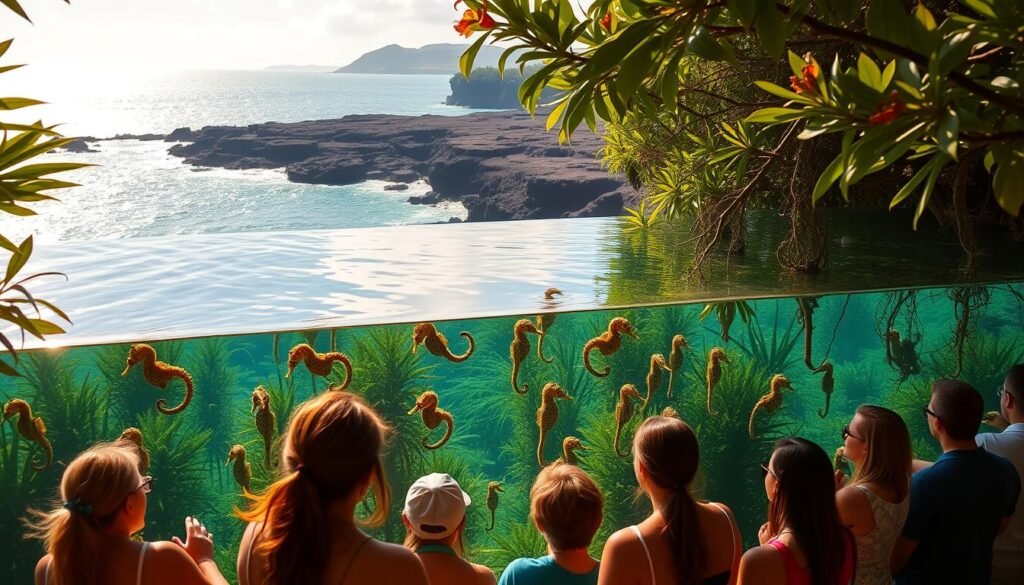
I’ve found a few wildlife encounters here that feel genuine and conservation-minded.
Ocean Rider Seahorse Farm is a small conservation-focused farm that breeds endangered seahorses for aquariums. On the 90-minute tour I joined, staff explained breeding, care, and how the operation reduces wild capture. Under staff guidance I even held a seahorse for a moment—always handled gently and safely.best-time-to-visit-new-orleans
Why visit: you learn conservation science, support a local farm, and enjoy an educational tour that suits families and ocean lovers. Tours fill fast, so book ahead and bring a camera with a zoom lens.
Respectful sea turtle viewing
Seeing honu on sand or in calm coves is one of my favorite moments on the big island.
- Keep distance and never touch or feed sea turtles; fines apply for harassment.
- Best time for sightings is often midday when turtles rest, but avoid crowding them.
- Use a zoom lens and plan wildlife stops around swims or walks so everyone enjoys the time without disturbance.
Leave no trace: pack out trash, skip single-use plastics, and stay on marked paths. Respect protects wildlife and keeps these places special for future visitors.
Kona’s beaches: black, white, and even green sand day trips
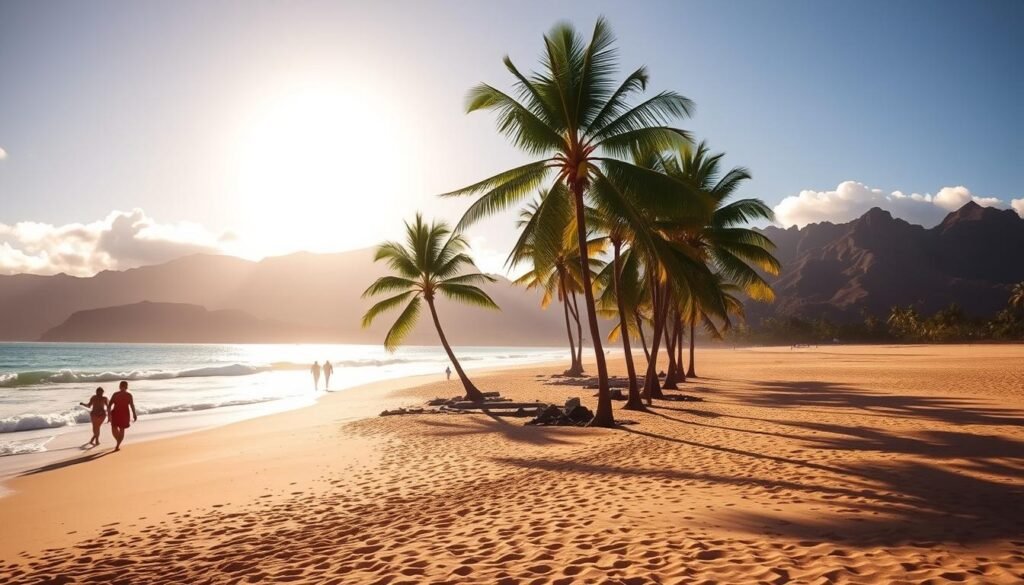
The island’s shoreline hides dramatic color shifts, from coal-black coves to rare green sand pockets and wide white arcs. I plan visits so I spend more time looking and less time driving.
Punaluʻu Black Sand Beach
Easy access and frequent sea turtle sightings make Punaluʻu a family-friendly stop. I always keep distance and let the honu rest.
Pololū Valley
The overlook rewards with a sweeping view, and a steep short trail drops to a dramatic black sand cove. Don’t swim there—strong currents make the surf dangerous.
Papakōlea (Green Sand)
Reaching Papakōlea means a 5.6-mile roundtrip hike from the trailhead near South Point. Pack lots of water and sun protection. I avoid offers for high-clearance rides; they’re not legal or safe.
Maniniʻowali and Kekaha Kai
Maniniʻowali (Kua Bay) serves bright turquoise water and white sand. I time visits for calm mornings. Kekaha Kai rewards a bumpy access road with broad white beach and clear water—slow drive, big payoff.best-time-to-visit-glacier-national-park
- Pair by region: group nearby beaches so you cut drive time and build shade breaks.
- Pack: umbrella, plenty of water, reef-safe sunscreen, and sandals for hot lava rock.
- Check conditions: seasonal swells change whether you lounge or swim.
- Leave sand and stones: take photos, not souvenirs.
| Beach | Access | Best note |
|---|---|---|
| Punaluʻu | Paved parking, easy walk | High chance of sea turtles on shore |
| Pololū Valley | Lookout + steep trail | Great view; swimming not advised |
| Papakōlea (Green) | 5.6-mile roundtrip hike | Pack water; no illegal rides |
| Maniniʻowali / Kekaha Kai | Short walk / bumpy road | Classic white sand and turquoise water |
Safety nudge: watch for shorebreak and rip currents. When in doubt, sit it out. For more ways I plan beach and coastal activities, see my favorite local activity and beach suggestions.
Coffee, chocolate, vanilla, honey, and sea salt: taste the island

A tasting loop through the coffee belt and nearby producers makes a perfect half-day escape. I map a few stops on Hualālai and Mauna Loa slopes and savor each pause.
Kona Coffee Belt tours and tastings
The belt spans 650+ farms. I pick a mix of free walk-throughs like Greenwell Farms and paid tastings that include roast demos. Volcanic soils and microclimates create distinct cups, so I sample roast levels side-by-side.
Old Hawaiian Chocolate and cacao visits
I visit Old Hawaiian Chocolate to watch pods become bars. The process is clear and the bars make excellent take-home gifts.
Vanilla greenhouse and DIY extract
The Vanillerie offers fragrant greenhouse tours and a DIY extract kit that I always buy as a souvenir.
Bees, sea salt, and practical tips
Big Island Bees gives a peek inside hives, a chance to spot the queen, and tastings of varietal honey. Kona Sea Salt tours show how deep-ocean water becomes mineral-rich salt and end with a tasting flight.
- Loop idea: build a half-day route around Captain Cook for coffee and cacao, then catch sunset at a nearby beach.
- Booking: space tours so you have drive time between places.
- Packing: closed-toe shoes and a small cooler for chocolate and honey.
Paddle, surf, and glide: SUP, surfing lessons, and outrigger canoes
A sunrise outrigger paddle with local guides gives more than a workout — it connects you with stories of the sea. I pick morning sessions for calm water and softer wind, which makes learning faster and more fun.best-places-to-visit-in-italy
Beginner surf breaks and private lessons
I prefer private or small-group lessons because instructors match waves to skill. Look for a gentle reef or point break that offers soft white faces and easy shoulder waves.
Standup paddleboarding in calm bays
Protected coves make SUP ideal for balance work and short paddles. I check wind, swell, and currents before launch and pick a short loop that returns near shade and a beach.
Outrigger canoe rides with local guides
Outrigger tours like Kona Boys and Anelakai Adventures blend paddling rhythm with cultural stories and wildlife spotting. Expect steady team strokes, hale (stories), and possible dolphin sightings during quiet time on the ocean.
- Gear: rash guard, booties for rocky entries, and a small drybag for keys and phone.
- Safety: listen closely to instructors, avoid shallow reef, and learn shoreline reads for currents.
- Plan: book lessons early in the week so you can return with new confidence and add a short snorkeling stop afterward.
Take to the sky: helicopter tours over volcanoes, waterfalls, and coastline
A helicopter lifts you over lava sheets and waterfalls faster than any road trip could reveal. I split choices into short coastal hops from Kona or longer island circuits that cross Volcanoes National Park and the Hamakua falls.
Practical note: flights out of Hilo can be more budget-friendly for deep-volcano views because the airport is closer to the craters and falls. Decide if the extra drive is worth the savings based on your schedule and comfort level.
Expect doors-off photo options, firm weight limits, and rotor noise. I bring dark clothing to cut glare, a camera strap, and a microfiber cloth for lenses.
- What you’ll see: lava fields, steep sea cliffs, hidden valleys, remote sand and white beaches, and braided waterfalls.
- Booking tips: book early flights for smoother air; check check-in times and operator safety records.
- Comfort tips: ask the pilot about priorities—coastline, craters, or falls—and sit on the side with your photo focus.
Pair a flight day with a chill afternoon by a pool or beach to balance the adrenaline. For me, a skilled operator and clear windows are worth paying a little more.
The wow factor: one flight can reframe the whole trip and reveal places you’ll plan new outings around.
Ziplining and hidden crater hikes on the west side
My favorite non-water days mix zipline flight with a guided walk into ancient lava tubes. These outings balance adrenaline and geology on the west side of the island. I aim for an early start for cooler air and clearer views.
Kohala canopy ziplines through lush forest
What I compare: platform styles, braking systems, and scenic elements like canopy bridges and lookout points. Courses vary from long, fast runs to scenic, camera-friendly platforms.
Who will love it: adventurous families and photography buffs. Guides keep safety briefings short and clear.
Hualālai private-access crater hike and lava tubes
What to expect: a moderated 4–5 mile route with private gate access. A naturalist leads the tour and we walk into 200-year-old lava tubes and across pit craters.
- Difficulty: moderate; good for active hikers.
- Packing: closed-toe shoes, layers, and a headlamp if the guide doesn’t supply one.
- Timing: pick morning departures for best light and cooler time on uplands.
- Weather note: guides often carry rain gear for sudden showers on this side.
Respect the land: stay on paths, don’t touch cave formations, and leave everything as found. I usually pair these outings with a post-adventure swim or a café stop and book early so I can reschedule if weather intervenes. Land days like these round out a water-heavy Kona trip and show another face of the big island.
After-dark magic beyond mantas: sunsets, luaus, and the Aliʻi saltwater pool
Sunset crowds gather along Aliʻi Drive, but the real quiet magic waits at the lava-fed saltwater pool overlook. I often pair a lively evening show with a slow photo stop here for a balanced night.
Voyagers of the Pacific vs. Island Breeze Luau
| Event | Energy | Setting |
|---|---|---|
| Voyagers of the Pacific (Royal Kona Resort) | High-energy, theatrical | Large lawn with ocean view |
| Island Breeze Luau (Courtyard King Kamehameha’s Kona Beach Hotel) | Intimate, polished | Hotel beachfront vibe |
What both include: open bar, buffet of local dishes, storytelling through song and dance, and a fire finale. I like that each show highlights Pacific voyaging and local craft cuisine.
Timing matters: I book a slot that begins near sunset so the meal, the dancers, and golden light line up. Arrive early for better seating and cleaner photo angles.
Photographing the Aliʻi Drive saltwater pool overlook
The ocean-fed lava pool is a favorite place for sunset shots. Even if you don’t swim, the pool edge and rocky shoreline give great foreground interest against the sun.
- Low-light tip: use a steady surface or a short tripod and lower shutter speed for richer color.
- Phone settings: lock exposure, tap the highlights, and try HDR for balanced skies and water.
- Layer up: trade winds cool the air after dusk—bring a light jacket.
I reserve luaus early in my trip so I can swap nights if weather shifts. After the show I like a slow waterfront walk on sand and pavement, a classic cocktail or mocktail in hand, and one last look toward the sea—because while manta encounters are unforgettable, an evening of food, dance, and the ocean-fed pool makes another kind of memory on the big island.
Kailua-Kona town stroll: markets, waterfront, and historic piers
A relaxed stroll along Aliʻi Drive gives me easy access to cafes, farmers stalls, and postcard piers. I map a short loop that starts at Kailua Pier, hugs Kamakahonu Beach, and winds past Huliheʻe Palace.
Kona Farmers Market and Aliʻi Gardens Marketplace
I hit the market early for the best fruit and small-batch gifts. My favorite stalls sell fresh tropical fruit, roasted coffee, and handmade leis.
Tip: grab a shave ice or an açaí bowl and sit by the water while you plan your next stop.
Kamakahonu Beach, Kailua Pier, and waterfront walks
I walk slowly along the pier for photos at sunrise and again near sunset for warm light. Benches and shady trees make this a great place for kids and a relaxed break.
- I often park once and wander; street parking is limited, so plan a short walk from your car.
- Time your visit for early morning or late afternoon to beat midday heat and crowds.
- This is a perfect low-effort day when you need a gentle rhythm between bigger trips.
Where I stop: a quick pop-in at Huliheʻe Palace for history, a browse at Aliʻi Gardens Marketplace, and a final stroll along the water.
Support local vendors—buy a snack or small gift. It keeps this place vibrant and helps the community that calls the west side home. For a fuller market overview, see my Kailua-Kona market guide.
Eat and sip local: oceanfront dinners, happy hours, and breweries
I often plan a tasting crawl that starts with a brewery tour and ends with a sunset table by the sea. It’s a great way to sample local brews, fresh seafood, and the relaxed island evenings on the west side.
Kona Brewing Company and Ola Brew tastings
Kona Brewing Company offers guided tastings and brewery tours where you can try classic pours and seasonal releases.
Ola Brew has a more local taproom vibe—good for a shorter stop and an offbeat crowd.
Lava Lava Beach Club, Huggo’s, and Kona Inn views
I book oceanfront dinners at Lava Lava Beach Club, Huggo’s, or the Kona Inn when I want golden-hour views right from my table.
Order a spread of island seafood and small plates so everyone samples a bit of everything.
Where I find the best mai tais at sunset
My one favorite mai tai sits at a table with sand beach light on the water. The setting lifts the cocktail—sweet, balanced, and perfect as the sun dips.
- Timing tip: hit happy hour for deals, or reserve 45–60 minutes before sunset for the best view.
- Parking: lots fill fast—I’ll grab a rideshare if I plan several sips.
- Family plan: aim for early dinner windows; many spots offer kid menus and nearby play areas.
- Cap the night with a walk along the waterfront and a to-go shave ice or bakery dessert.
| Spot | Best time | Note |
|---|---|---|
| Kona Brewing Company | Afternoon | Brewery tour + tastings |
| Ola Brew | Late afternoon | Local taproom vibe |
| Oceanfront restaurants | Sunset | Reserve early for prime tables |
Big Island day trips from Kona: Mauna Kea, Waipiʻo/Pololū, and beyond
For me, long day trips from the west side can pack dramatic contrasts into one itinerary. I like mixing a summit sunset, a steep coastal hike, and a short national park loop on separate days so each feels relaxed and memorable.
Mauna Kea summit tours for stargazing and sunsets
Mauna Kea tours run sunset plus stargazing and include acclimatization stops and warm parkas. Guides pause at visitor centers for oxygen breaks and short walks so you adjust before the summit.
Note: self-driving requires true 4WD and mountain experience; I prefer guided runs because they remove the stress and handle timing for that mind-blowing sunset and clear night sky.
Waipiʻo Valley overlook and Pololū Valley hike
Access at Waipiʻo is often restricted; current realities mean I usually admire the overlook and skip risky descents unless with a local guide.
I favor Pololū for a permitted, safer black-sand viewpoint and a steep trail down to the cove. The hike is short but rugged—good water, sun protection, and steady shoes make it easy to enjoy.
Volcanoes national park from the Kona side (what’s realistic in a day)
The national park sits roughly two hours each way from my base, so I start early. A realistic day trip hits steam vents, the Kīlauea overlook, and one or two short lava field walks.
Plan: prioritize a short loop of overlooks and 20–40 minute hikes, pack layers for big weather swings, and expect a cool summit chill back at higher elevations. Build buffer time for photo stops and traffic—those pauses make the route feel easier.
- Pack warm layers, snacks, water, and sun protection for rapid climate changes.
- Respect closures and signage; sacred or unstable terrain is off-limits.
- Space long-drive days with a beach or boat afternoon so you don’t burn out.
| Day Trip | Why I go | Practical note |
|---|---|---|
| Mauna Kea summit | Sunset + stargazing | Guided tours recommended; acclimatize |
| Pololū Valley | Black-sand hike | Short steep trail; bring water |
| Volcanoes national park | Crater views & lava walks | 2-hr drive each way; early start |
Why these matter: they are some of the one best excursions on the big island, and no trip feels complete without at least one summit, valley, or park day. Travel responsibly, plan buffers, and savor each varied view.
Photos you’ll treasure: hire a local photographer or DIY golden hour
A sunrise or sunset session can turn ordinary snapshots into images you’ll keep forever. Many local photographers run short sunrise and sunset shoots along lava rock coves and quiet beaches. Flytographer and several local studios are reliable options when I want a pro touch.
If you’re looking for simple planning tips, here’s what I do:
- I book a photographer early in the trip for scheduling flexibility and shoot at lava rock coves or sheltered beaches.
- Wardrobe tip: neutral tones and light layers avoid blown highlights and pop against black rock and blue water.
- DIY hack: arrive 20 minutes early, use backlight, and keep shooting as the light shifts—my one favorite trick is the last 20 minutes before sunset and the first 10 after.
- Check tide and swell for safe footing, bring a microfiber cloth, extra battery, and a small reflector if you have one.
- Shot list: wide landscapes, close family portraits, candid walking frames—this tells the whole story.
When you’ll find a local pro, they often know hidden angles and tide windows on the big island. Print a few favorites when you return so the memories live beyond your phone.
Conclusion
Pick three highlights, leave the rest for wandering, and you’ll find the big island opens up on its own terms.
I use Kailua-Kona as a base for manta night swims, farm tastings, historical parks, boat days, and easy beach time. In a few days you can sample coffee, meet local makers, and fit a day trip to Mauna Kea, Pololū, or Volcanoes National Park without rush.
Book a couple of anchor experiences early, then give yourself blank hours for rest by the pool or a quiet cove. Respect the land and wildlife—this place is home for many, and local businesses keep the coast vibrant.
For planning help, see my Kona guide. I wish you clear water, steady trade winds, and sunsets that linger long after you leave the beaches.


